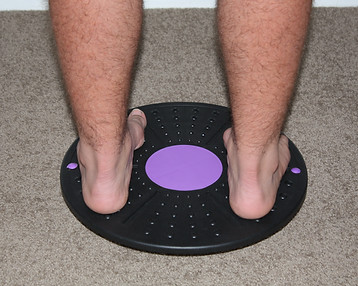Ankle Instability Physiotherapy
Physiotherapy treatment for ankle instability
Most ankle injuries get better completely and cause no long-term problems. Sometimes, however, there is some permanent damage to the ankle. The ligaments may fail to heal properly and become weak, or there may be damage to the joint itself or some other structure nearby.
Most importantly, an ankle ligament injury also damages the small nerve endings in the joint and ligaments. These endings are very important, as they tell your brain where your ankle is and what position it is in (they are called "proprioceptive nerves"). Your brain relies on this information to control the muscles which move and protect your ankle. If these nerve endings are not working properly, your brain does not get reliable information and the muscles around your ankle may not work together properly. You would feel this as a tendency for your ankle to "give way", often with minor stresses. This might make you prone to repeated ankle sprains. This is referred to as "ankle instability" and is more commonly due to damage to the proprioceptive nerves than actual weakness of the ligaments.
What can be done about ankle instability?
As most people with ankle instability have proprioceptive nerves which are not working properly, the first treatment is a physiotherapy programme to re-train these nerves how to respond to movements of the ankle, by doing various exercises and activities. If your ankle or Achilles tendon are stiff, you will also be shown exercises to stretch these, and the strength of the muscles around the ankle will be increased by exercises. If your foot shape makes you prone to extra stress on the ankle ligaments, a moulded insole may be advised for your shoe to reduce these stresses.
Many people will find their ankle much more stable and comfortable after physiotherapy. However, in some people problems continue. At this point the opinion of an orthopaedic foot and ankle surgeon would be helpful.
Source: British Orthopaedic Foot and Ankle Society, Patient Information.


